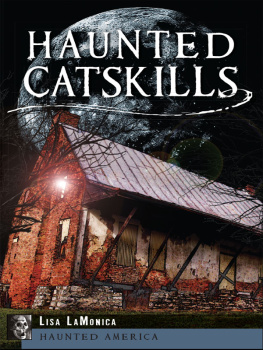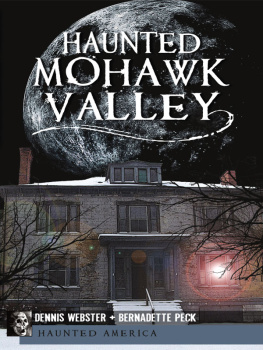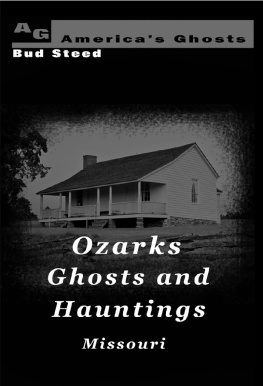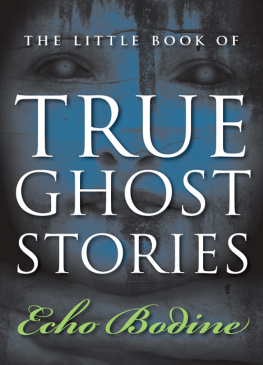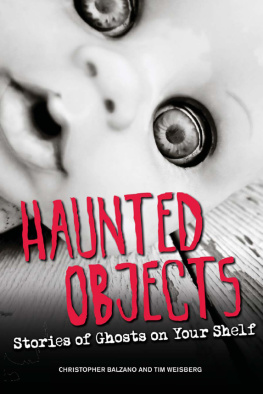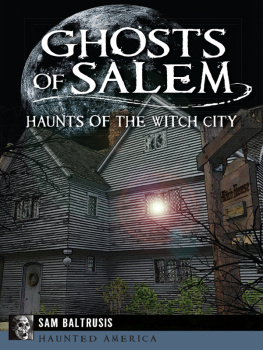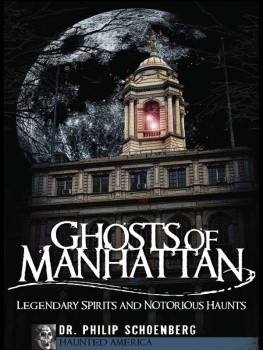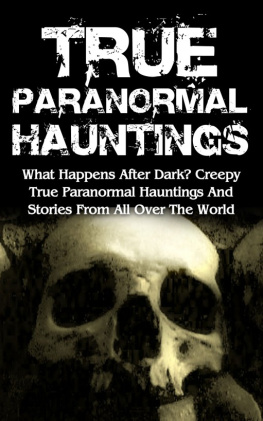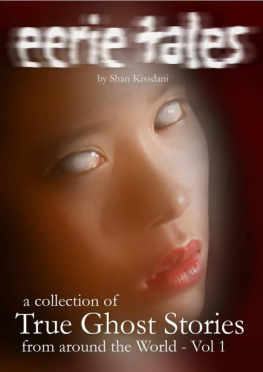
Published by Haunted America
A Division of The History Press
Charleston, SC 29403
www.historypress.net
Copyright 2013 by Lisa LaMonica
All rights reserved
First published 2013
e-book edition 2013
Manufactured in the United States
ISBN 978.1.62584.089.9
Library of Congress CIP data applied for.
print edition ISBN 978.1.62619.011.5
Notice: The information in this book is true and complete to the best of our knowledge. It is offered without guarantee on the part of the author or The History Press. The author and The History Press disclaim all liability in connection with the use of this book.
All rights reserved. No part of this book may be reproduced or transmitted in any form whatsoever without prior written permission from the publisher except in the case of brief quotations embodied in critical articles and reviews.
CONTENTS
ACKNOWLEDGEMENTS
This book would not have been possible without help and collaboration from many great people:
Roy Davis of the Windham Historical Society; Karrie Allen of the Chatham Courier; Douglas Stalker, Judith Rundell and Steve Pec of the Vedder Library; the New York Times; Bruce Bergman, Rick Allen and Ed Klingle at the Van Hoesen House; Emily Benson and Ms. Terwilliger at the Hudson Area Library; Enid Futterman and Rachel Waldholz of Our Town magazine; Tim Duerden of the Delaware County Historical Society; archivist Ray LaFever; Margaret Kenyon, Nancy J. Haynes, Ellen McHale and Libby Tucker of the New York Folklore Society; Roderic H. Blackburn, PhD, at the Albany Institute of History and Art; John Craig at the Hudson Area Library History Room; Nina Shengold at Chronogram magazine; Ron Toelke Associates; Peter Pehrson at the Stoddard Corner Bookshop; Stephen Kent Comer and Barbara Allen of the Stockbridge Library Museum and Archives; Andrea Lain of the New York State Museum in Albany; Donald Shriver and Jennifer Palmentiero of the Southeastern New York Library Resources Council; Jason Korbus; Andrew Amelinckx; Amy Levine; Mason Winfield; Christopher J. Hack; Skip Hommel; and Gail Hommel.
Id also like to thank my neighbors Ed and Antoinette Bratton for their assistance and Marcy Groll for her hospitality. Gratitude to Mary Bartolotta for bringing me to a great house to write a book in, and also to my son, Patrick Robert Mason.
Many thanks also to Whitney Landis, my editor at The History Press, for her guidance. I am grateful to her and The History Press for making this project a reality.
INTRODUCTION
The Catskills and upstate New York are what Washington Irving called this spellbound region. The Catskill Mountains are two hours north of New York City and forty miles south of Albany. The mountains saw erosion from glaciers during the last two Ice Ages, as evidenced by exposed rocks around the region. The valleys of the Catskills and its rounded mountains are a result of the once-great sheets of ice that traveled through them.
Discovered in 1609 by Henry Hudson, this region offers four hundred years of history and lore. Settled by seventeenth-century Dutch and written about in Washington Irvings Rip Van Winkle, the area was then known as Kaatskill, meaning Cat Creek. Catamounts, as they were then known, were the mountain lions that inhabited the region. As the story by Washington Irving goes, Rip Van Winkle fell asleep in the Catskill Mountains for twenty years after an encounter with the ghost of Henry Hudson and his men. This is one of Americas most well-known and beloved folktales.
Rip Van Winkle awoke from his twenty-year sleep next to Kaaterskill Falls, a two-tiered waterfall whose dual cascades total 260 feet, making it the highest waterfall in New York State. Its been more than one hundred years since Washington Irving wrote his tale, and the falls are still a breathtaking sight. You can reach the base of the falls via the Kaaterskill Falls Trail, a lovely state-maintained path that begins where Route 23A crosses Kaaterskill Creek between the hamlets of Haines Falls and Palenville. From the trailhead, the path runs uphill, alongside the creek, for about a half a mile until the falls come into view.

Kaaterskill Falls. Library of Congress.
Each fall for the last two years, when foliage season shows us the rich colors of the trees and the brisk fireplace smoke scent is in the air, I have wanted to put together the stories of our region. Many of these stories have been nearly lost over the last thirty years or gathered sporadically in many publications. It also gave me joy to combine the stories with some of the old photographs, which hasnt been done with many of these older tales.
In writing this book, I had the pleasure of reading many classic books for research purposes. My reading helped me gain even more knowledge about some of the tales and mythology of the Catskills. Body, Boots and Britches is still considered to be the best collection of New York State folklore there is. Things That Go Bump in the Night and Spooks of the Valley, both published in the 1950s by Louis C. Jones, are classics and must-reads. But my absolute favorite was the 1970s book by James McMurry, The Catskill Witch and other Tales of the Hudson Valley. This now-out-of-print book allowed me to correspond with the author via email, and I have since made a new friendship with a fellow author who wrote tales about my Columbia County when I was a child wishing to grow up and write books of my own. I came across this book rather late in my research process, and Im so glad I found it.
When Halloween approaches, people of Celtic descent focus a bit on Samhain (pronounced SAH-win), a harvest festival marking the end of summer and the beginning of the Celtic New Year. The Celts believed that during Samhain, the veil between the living and the dead was at its thinnest, making communication with the spirit world possible. According to Our Town writer Rachel Waldholz, The result, it seems, is that ghosts are woven into the fabric of life in the country, along with the chickens and woodstoves and gravel mines.
Considered by many to be Americas first great writer, Washington Irving gathered material and then fame for his characters in The Legend of Sleepy Hollow and Rip Van Winkle in this Hudson Valley/Catskills region. Now, over one hundred years later, we all know the story of Ichabod Crane and the Headless Horseman of Sleepy Hollow, who some believe were based on people residing in Kinderhook. The Jesse Merwin farmhouse in Kinderhook has long held stories of being haunted. Merwin was a friend of Washington Irvings and is believed to have been the model for the Ichabod Crane character.
Some of the first streets and houses of America are located in the Hudson Valley, well trodden, and many with residual energy from the past. New York State built the first concrete road in Ulster County: the New Paltz Turnpike to Highland.
I also cant stress enough our regions pre-historythe history of the Mohicans and other Indians who first inhabited our Hudson Valley and the Catskills areaand it is important to me to acknowledge their stories as well. On the journey of writing this book, I had the profound pleasure to meet the last lineal descendant of the Mohican tribe of my county, a member of the Stockbridge-Munsee Band of Mohicans, the only descendant community of the Original People of Columbia County. I have formed a new friendship there also.

Next page
